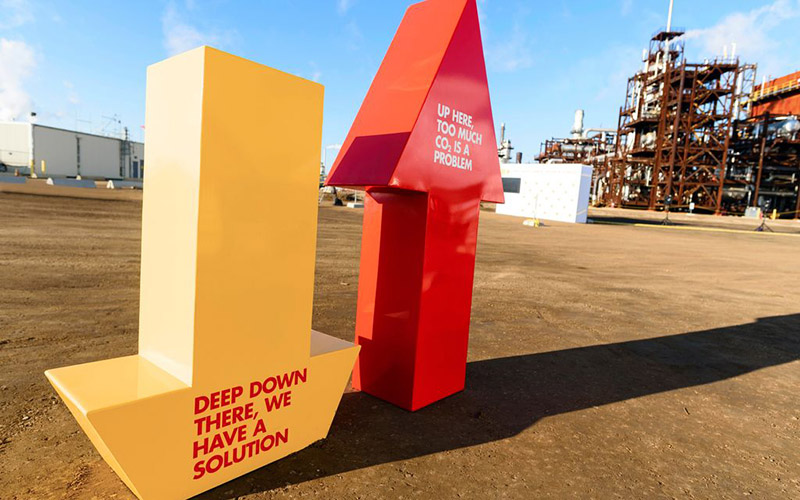
(Photo: Alberta Newsroom)
As California aggressively addresses climate change, carbon capture technology is taking center stage in both the public and private sectors, as evidenced by Elon Musk’s challenge announcement that he would award $100 million for the best technology in this space. At last month’s 2020 California Economic Summit, leaders discussed the importance of Carbon Capture Storage (CCS) and how it can help the state reach its ambitious emissions goals.
“It’s widely believed or widely agreed that carbon capture utilization and storage is necessary to meet the Paris agreement goals and meet California’s goals,” said Daniel Droog, vice president of Energy Transition at Chevron. He added, “It’s our view that California is positioned to be a leader on it much like California is a leader on climate policy for the rest of the world.”
Droog joined a panel moderated by Lucas Public Affairs Executive Vice President Cassandra Pye and included California State Senator Anna Caballero (D-Salinas), Energy Futures Initiative (EFI) Principal Melanie Kenderdine, California Deputy Secretary for Energy Matt Baker, Acting State Geologist Steve Bohlen and CA FWD CEO Micah Weinberg.
“California has set world-leading goals to curb emissions and transition to less carbon intensive energy sources over the next two and a half decades,” added Pye. “California’s emissions goal has got to have an all-of-the-above (including solar, wind and other technologies) approach that will include technologies that will remove carbon from the atmosphere.”
California has set a goal to reduce emissions by 40% by 2030, be carbon neutral by 2045 and be carbon negative thereafter.
CCS is the process of capturing carbon dioxide (preventing it from entering the atmosphere), transferring it to a secure location and creating and implementing long-term storage. It is the subject of “Action Plan for Carbon Capture and Storage in California,” a report issued by EFI and Stanford University’s Precourt Institute for Energy and the Center for Carbon Storage.
“We assumed California’s policy goals – 2030 and mid-century for emission reduction targets,” explained Kenderdine, who was a project executive on the report. “What the study concluded is that you could reduce the State’s emissions by 15% by 2030.” She added that it doesn’t seem like a large drop, but when broken down by sectors, it is 66% greater than emissions from all heavy-duty vehicles, 84% greater than emissions from the agricultural sector, 44% greater than the building sector and 64% greater than in-state power generation.
“We need to be using good science and that’s the best example of good science I’ve seen that really talks about a number of things,” remarked Senator Caballero.
“In California, there are pathways for many of these technologies, particularly carbon capture and carbon removal. Those are big systems that aren’t necessarily on one site that cross multiple jurisdictions,” said Baker. “At the Department of Natural Resources, we’re looking at whether this is something we should try to create incentives or try to help move forward in that regard.” He added that the communities near CCS facilities must be taken into consideration, and include environmental and employment impacts.
On the job front, those employed by the traditional energy sector could transition to CCS jobs as many of the same skills are transferable and new jobs would also be created by CCS technology.
This was an important point for Senator Caballero, who represents a district that mainly relies on agriculture, but where oil extraction is also a big source of employment. “The number one thing people are talking about, besides COVID, are good jobs – the ability to make a good living.”
She added, “I was happy to hear a discussion about collaboration, engaging people in the Central Valley as CA FWD has done, and to have a discussion about how do we make this transition, how do we create good jobs and how do we help to clean the air as the Central Valley is one of the areas with poorest air quality in the state, which then creates a lot of health issues for poor people.”
Droog shared lessons Chevron learned from operating the Gorgon Carbon Dioxide Injection Project off the coast of Australia, which is one of the largest carbon capture storage projects in the world. Those lessons include the importance of experience and expertise, safety and monitoring and public/private partnerships.
“It really requires understanding the state’s goals, understanding different stakeholders’ goals in terms of what does this do for the local economy,” added Droog. “Chevron thinks the best projects are the ones that include a number of entities, including a number of private entities. So you really need someone to bring together the puzzle pieces.”
“All these pieces have to come together,” said Bohlen. “And it’s a huge opportunity for economic growth and prosperity.”
You can watch the entire panel discussion here.

